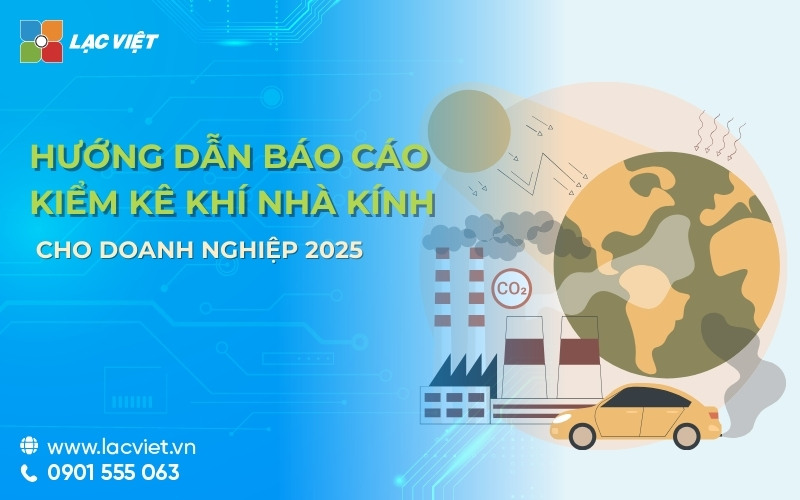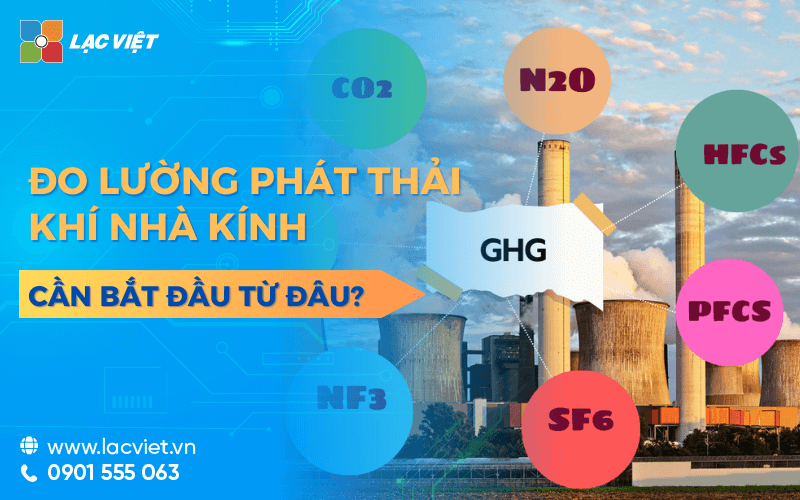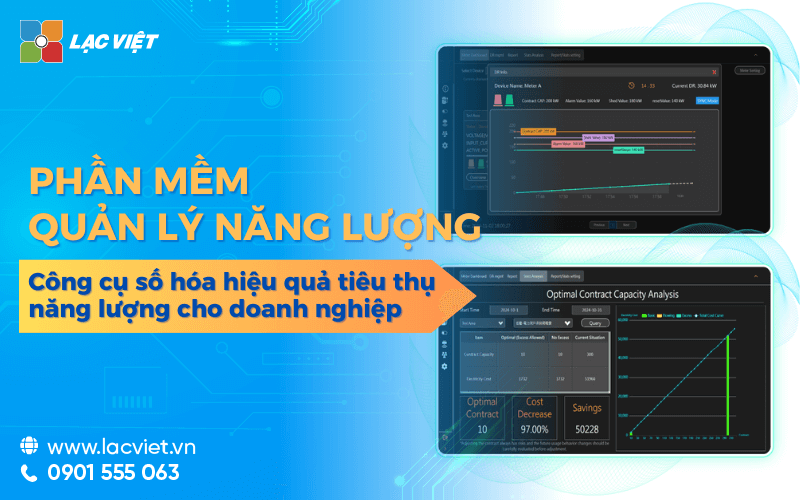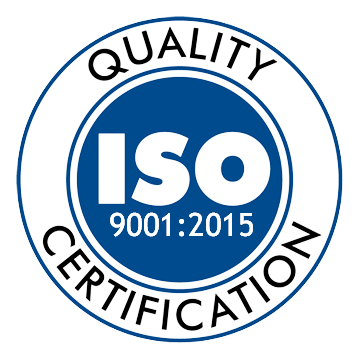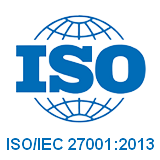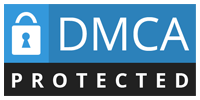Climate change and environmental issues are becoming global challenge, which requires active participation from every business. In that context, report greenhouse gas inventory has emerged as an essential tool, not only to measure, manage emissions, but also to shape the strategy for sustainable development.
This article Lac Viet Computing will help the organizations and enterprises understand more clearly about the meaning, process, benefits of reporting greenhouse gas inventory, from which the construction of a production system to operate effectively, in accordance with the international standards of credits carbon.
1. Report greenhouse gas inventory is what?
1.1. Definition
Report greenhouse gas inventory (GHG Inventory Report) is a detailed documentation, which recorded and presented the results of measurement, calculation and assessment of greenhouse gas emissions from the activities of an organization, business or product in a specific time period.
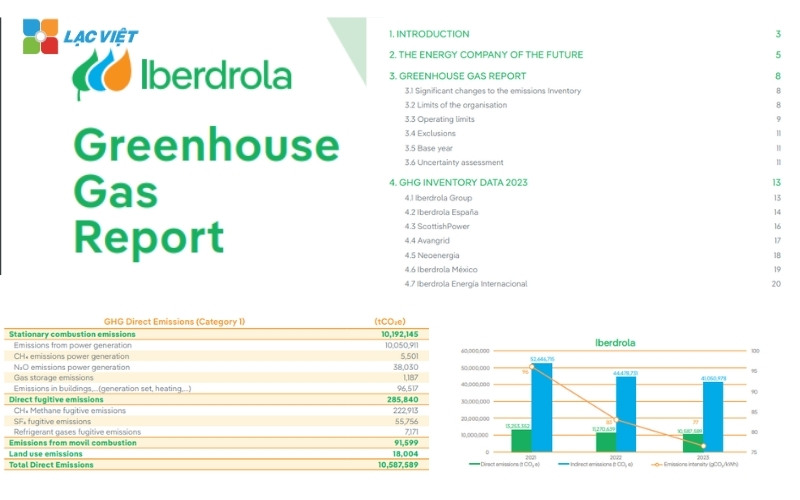
Components of the report:
- Aggregate emissions from different sources (Scope 1, 2, 3).
- Analyze and evaluate the major emissions sources.
- Given the recommendations, solutions to reduce emissions.
Legal basis and standards: Report is usually based on international standards such as ISO 14064, GHG Protocolor legal requirements in the country where the business operates.
Meaning: Is the step platform to manage greenhouse gas effect, creating the basis for the strategy to reduce emissions to meet the standards credits carbon.
1.2. Applicable objects
Report greenhouse gas inventory in accordance with various types of organizations and businesses, especially the organization of large emitters.
- Business production: Enterprises in the field of industrial production, often emission of large amount of greenhouse gases from the production process energy consumption.
For example: Cement industry, steel, chemicals, food production. Power plants run on coal or natural gas.
- Business service: Though no emissions directly, big service businesses still need to report to reduce emissions indirectly from energy consumption (Scope 2) or supply chain (Scope 3).
For example: Logistics, transportation, financial services.
- Organization: The public administrations, educational institutions, hospitals have a responsibility in reducing emissions, promote sustainable development.
For example: A hospital using HVAC systems consume more energy, need optimization to reduce emissions.
- Business under the global supply chain: The businesses involved in global supply chains need to report greenhouse gas to meet demand from international partners.
For example: Supplier of raw materials for major corporations such as Unilever, Nestlé, or Toyota.
- Measuring greenhouse gas emissions where to start?
- Greenhouse gas emissions, what is? Causes, effects and solutions to reduce emissions towards Net Zero by 2050
- Emissions are what? The solution to reduce emissions towards Net Zero by 2050
- Greenhouse gas inventory as specified how? Guide implementation process
2. The process of reporting on greenhouse gas inventory
The process of reporting on greenhouse gas inventory includes the step from data collection, to determine the scope of emissions, to calculate and report details. This is the platform for businesses to manage greenhouse gas efficiency, reduce emissions to meet international standards.
Step 1. Collects data emissions
Collecting data is the first step and the most important in the process of reporting on greenhouse gas inventory. This process ensures all sources of emissions from the operation of the business are recorded fully and accurately.
Data source need to collect:
- Energy bills: Includes bill electricity use, fuel (coal, oil, diesel, petrol, natural gas). These data are the basis to calculate emissions Scope 1 and Scope 2.
- Report production and operation: Recorded production process energy consumption or greenhouse gas emissions directly.
- Data transport and waste disposal: Include the amount of fuel consumption during transport, emissions from waste disposal.
Tool support:
- RETScreen: Tools to analyze and calculate energy efficiency business support, identify sources of emissions, the largest.
- CoolClimate Calculator: Free tool online help business measure emissions from various activities.
- GHG Protocol Tools: The tools in international standard, suitable to calculate and report greenhouse gas emissions according to the scope (Scopes).
Step 2. Determine the range of emissions
After collecting data, businesses need to classify emission source according to the three ranges are GHG Protocol specified:
- Scope 1 (direct emission or): Is the amount of greenhouse gas emissions from sources that business directly owned or controlled. For example: CO2 emissions arising from the boiler, means of transport owned by the business processes of industrial production.
- Scope 2 (emissions indirectly from energy): Arising from the consumption of energy purchased from outside, such as electricity, heat or steam. For example: A plant consumption of 1,000,000 kWh of electricity per year, with the emission power is 0.5 kg CO2/kWh emissions will be 500 tonnes of CO2.
- Scope 3 (emissions indirectly, other): Includes all emissions indirectly else in the supply chain, from the transport and disposal of products after use to emissions from the supplier. For example: A manufacturing company needs to transport 10,000 tons of raw materials through distance 200 km. With the emission 0.25 kg CO2/ton/km, emissions of 500 tons of CO2.
Step 3. Calculate the amount of greenhouse gas emissions
After determining the scope of emissions, business conduct calculate the amount of greenhouse gas emissions from each activity.
Calculation formula:
Greenhouse gas emissions=activity Data×emission factors
- Activity data: The amount of electricity consumption, fuel used, distance shipping, etc.
- The coefficient of emission: Provided by the IPCC, GHG Protocol, or management agency, national.
Practical example: A business consumes 1,000 liters of diesel per month. With the emission of diesel is 2,63 kg CO2/liter: 1,000 liters×2,63 kg CO2/liter=2.630 kg CO2/month
Step 4. Reporting greenhouse gas inventory
Report greenhouse gas inventory need to present clear, transparent and easy to understand, includes following contents:
- Total emissions according to each scope (Scope 1, 2, 3): Aggregate emissions from the source directly and indirectly. Charts and tables illustrations to help readers to visualize.
- Reviews source emissions privacy: Identify the activity that emissions biggest cause analysis.
- The solution to reduce emissions: Given the short-term measures and long-term to reduce emissions, such as improving technology, use of renewable energy, optimization operation.
- Methodology: Specifies the data source, tools, emission factors used in the inventory process.
Step 5. Evaluation and report
- Appraisal report: Reports should be checked and confirmed by the independent organization to ensure accurate and reliable. For example: Organization SGS or Bureau Veritas provides appraisal services gas greenhouse for business.
- Report: Businesses can publish the report in the shareholders meeting, report, ESG, or public on the website to transparency of data, increase brand reputation.
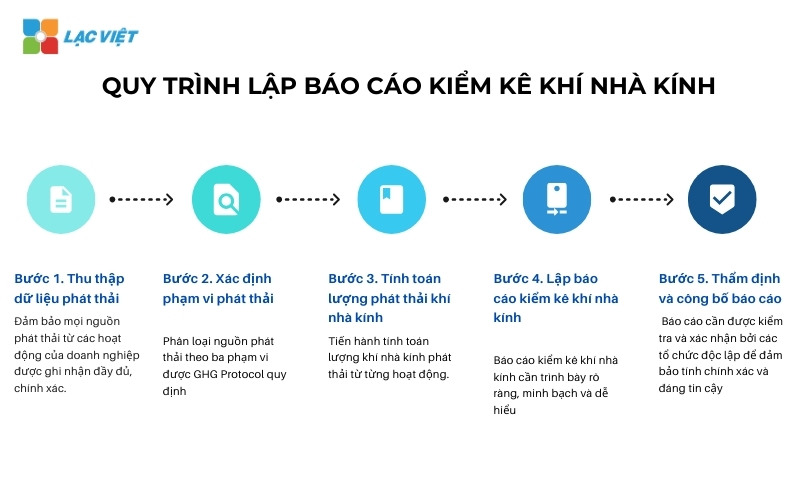
3. Detailed content of the report greenhouse gas inventory
Detailed content of the report greenhouse gas inventory not only help businesses understand the source of emissions, but also provide the basis data to plan effective minimization.
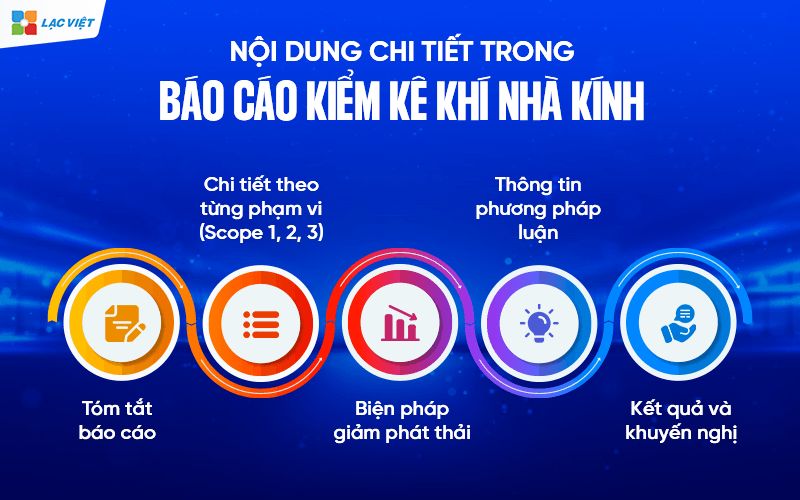
3.1. Summary report
The summary report provides an overview of the amount of greenhouse gas emissions and reduction targets for emissions of the business, at the same time briefly present the solutions are, will be applied.
Overview of greenhouse gas emissions:
- The total amount of greenhouse gas emissions in the reporting period (unit: tons CO2e).
- Allocation of emissions by each scope (Scope 1, 2, 3).
Goal of reducing emissions:
- Emission reduction 10% within 2 years through improved manufacturing processes.
- Achieve carbon neutral by the year 2030 by investing in renewable energy and credits carbon.
Summary of the solution:
- Are made: Energy optimization in the production line, reduce heat loss from the boiler.
- Tentative deployment: Deployment of solar power system on the roof of the workshop, applied technology seizure of carbon (carbon capture).
3.2. Details on each scope (Scope 1, 2, 3)
This section analysis the amount of greenhouse gas emissions from sources in each range, to help businesses understand the source of emissions, the largest to focus on improving.
Scope 1: emissions directly
Emission source: The amount of CO2 gas from the boiler using diesel oil. Methane (CH4) arising from a system of waste disposal.
For example: A plant used 50,000 liters of diesel/year. With the emission 2,63 kg CO2/liter, emissions Scope 1: 50.000×2,63=131.500 kg CO2/year (131,5 tons CO2/year).
Scope 2: emissions indirectly from energy consumption
Emission source: Power consumption from the national grid. Use steam from an external supplier.
For example: A business uses of 1,000,000 kWh/year from the national grid, with the emission is 0.5 kg CO2/kWh emissions Scope 2 will be: 1.000.000×0,5=500.000 kg CO2/year (500 tons CO2/year).
Scope 3: emissions indirect other
Emission source: Transportation of raw materials from suppliers. Emissions from the product end of life.
For example: A company transported 5,000 tons of cargo over a distance of 200 km, with the emission 0.25 kg CO2/ton/km: 5.000×200×0,25=250.000 kg CO2/year (250 tons CO2/year).
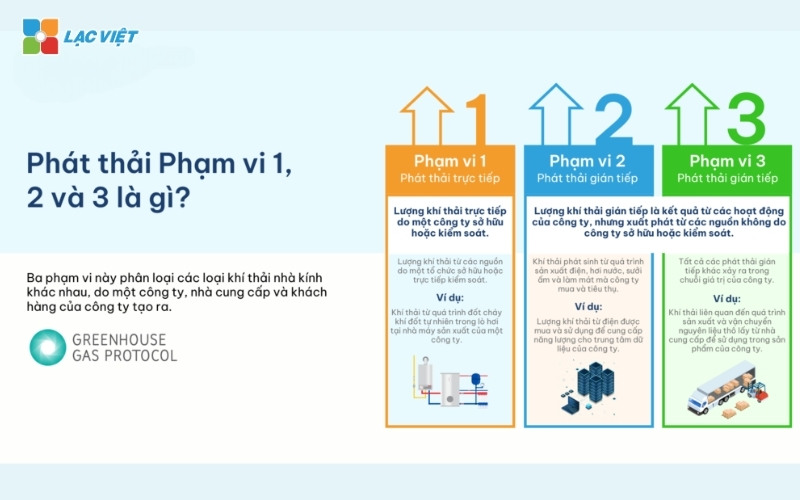
3.3. Measures to reduce emissions
Measures to reduce emissions are divided into short-term and long-term, consistent with the sustainable development strategy of the enterprise.
Short term:
- Optimized operation: Improvements old equipment to reduce energy consumption. Used materials for insulation system, boiler and pipes.
- Equipment use energy saving: Replace old light bulbs with LED lights. Installation of the inverter for the motor system.
Long term:
- Investing in renewable energy: Build system, solar or wind power. For example: Installation 1 MWp solar power, helping to reduce 1,100 tons of CO2/year.
- Applied technology seizure of carbon (Carbon Capture): Capturing CO2 from the boiler and re-use in production.
3.4. Information methodology
This section presents the standard methods and data used in the process of greenhouse gas inventory.
- Applicable standards: ISO 14064: International standards on measurement and management of greenhouse gases. GHG Protocol: Comprehensive guide to measure emissions Scope 1, 2, 3.
- Emission factors and source reference: The emission from IPCC 2025 Guidelines. Use software support such as RETScreen to calculate quickly and accurately.
3.5. Results and recommendations
This section summarizing what has been achieved and propose the next steps to improve operational efficiency, reduce emissions.
Evaluate the effectiveness of solutions implemented: For example, Optimized boiler to help reduce 15% of the oil consumptionsave 200.000.000 VND/year.
Proposed roadmap for reducing emissions:
- Short-term (1-3 years): Enhanced control and monitoring of the source emission privacy.
- Long-term (5-10 years): Investment in renewable energy, aiming to be carbon neutral by 2030.
4. Benefits of reporting greenhouse gas inventory
Report greenhouse gas inventory beneficial environmental business support achievement of the sustainable development goals, improve business performance, increase competitive advantage in the market.
4.1. Effective management of emissions
Reporting greenhouse gas inventory helps businesses effectively manage emissions, thereby improving the production process and optimize operation.
Identify major emissions sources:
- Inventory reports allow businesses to accurately determine the activity or devices consume the most energy, such as steam boiler, air compressor, or means of transport.
- Practical example: A cement factory discovered that the furnace up to 40% of total CO2 emissionsfrom that focused investment in technology to reduce emissions for this device.
Come up with strategies to reduce emissions:
Reports help businesses establish a roadmap for reducing emissions of short-term and long-term. These strategies usually include:
- Replace the old equipment with the equipment more energy savings.
- Use recycled materials or environment-friendly in manufacturing.
Improve data management: Data emission clear and transparent to help businesses monitor progress, adjust the appropriate strategy to achieve sustainable goals.
4.2. Meet legal requirements and international standards
In the context of the international standards, legal regulations on greenhouse gas increasingly stringent reporting greenhouse gas inventory become a mandatory requirement for many businesses.
To comply with the rules of domestic and international:
- In Vietnam, The Law on Environmental protection 2020 requires big business made greenhouse gas inventory periodically.
- On the range of international standards such as ISO 14064, GHG Protocolor CBAM (adjustment mechanisms border carbon) requires businesses to be transparent about the emissions of their own.
Facilitate market participants credits carbon:
Report inventory is material to the business participate in the exchange program credit only carbon, such as the ETS system in the EU or program REDD+ for business agriculture and forestry.
Practical example: A business steel production in Vietnam has been reporting on greenhouse gas inventory to meet demand from CBAM when exporting products to the EU.
4.3. Increase brand reputation
Made and published transparency report is an effective way for enterprises to improve brand reputation, asserting responsibility to the environment.
- Image-building green business: Customers, investors and partners increasingly priorities of cooperation with the business committed to protecting the environment. Report greenhouse gas inventory, is a clear witness for those efforts.
- Attracting investors: Investors interested in the criteria ESG (Environmental, Social, Governance) will appreciate the business have to report emissions and transparent strategy to reduce emissions is clear.
- Practical example: Unilever report greenhouse gas annually, thereby increasing trust from customers and partners, at the same time increase sales from products friendly with environment.
4.4. Cost savings and increased operational efficiency
Reporting greenhouse gas inventory not only benefits the environment but also help businesses save on operating costs and improve business efficiency.
Optimized energy consumption:
- Through the measurement and analysis of emissions, businesses can detect the source of energy consumption to make improvements.
- For example: A company food production has decreased 15% of electricity consumption by optimizing the production line and system installation, energy monitoring.
Reduced fuel costs:
- The transition from fossil fuels to the renewable energy source cost savings long-term.
- For example: A factory installation of solar power system on the roof of the workshop, which saves 1.2 billion VND/year the cost of electricity and up to 300 tons of CO2 emissions.
Decision support smart investment: Inventory reports provide the basis data for enterprises to evaluate the investment project from that choice of technology solutions, operating more efficiently.
5. Examples of practices on reporting greenhouse gas inventory
5.1. Unilever: transparency and reduce global emissions
Unilever conglomerate, the world leader in the fmcg industry, has become a model of transparency and efficiency in greenhouse gas inventory.
Made greenhouse gas inventory comprehensive:
Unilever apply GHG Protocol to measure, report greenhouse gas emissions globally, including Scope 1, Scope 2, Scope 3. This allows corporations understand emissions from production, operation and supply chain.
Strategies to reduce emissions:
- Investing in renewable energy at the factory.
- Optimized supply chain to reduce emissions from shipping.
- Use recycled materials in product packaging, reducing emissions from the source.
Results:
- Discount 15% CO2 emissions in the last 5 years.
- Committed to reaching carbon neutral by the year 2039, the way for other businesses to learn and apply.
The transparent, comprehensive greenhouse gas inventory not only helps Unilever reduce emissions but also improve brand reputation, strengthen the confidence of customers and investors.
5.2. Vinamilk: Integrated inventory reports into production
Vinamilk, leading dairy group in Vietnam, has pioneered the integrated report greenhouse gas inventory into production and operation.
Greenhouse gas inventory at the farm and factory: Vinamilk apply standard ISO 14064 to measure, report emissions from all activities, including supply chain.
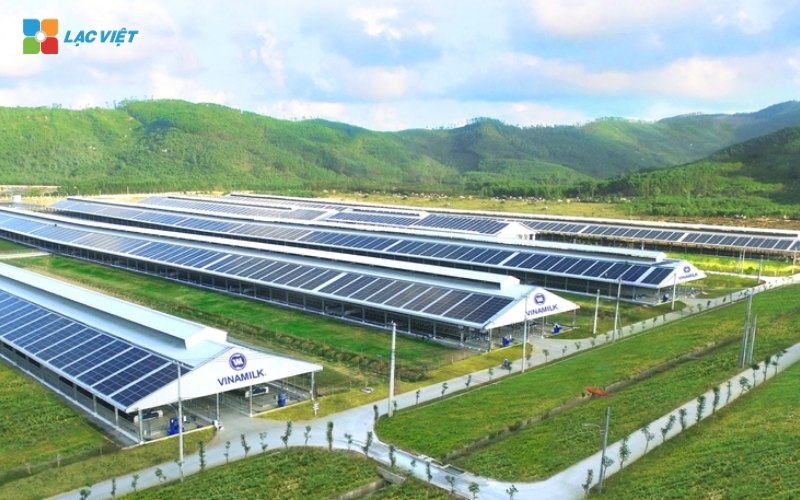
The solution to reduce emissions:
- Building systems renewable energy such as solar power on the roof at the dairy farm.
- Deployment process wm closely to reduce methane arising from cow manure.
- Increased use of the raw material environmentally friendly packaging.
Results:
- Reduced by more than 50,000 tons of CO2/year thanks to the optimized use of renewable energy and improved manufacturing processes.
- Be honored in the international award for sustainable development.
Vinamilk has proven that the greenhouse gas inventory is long-term strategy to optimize operating costs, enhance business image.
If your business is looking for ways optimized to operate, save the cost and meet the international standards, let's start up report greenhouse gas inventory right. This is not only environmentally responsible but also the opportunity to assert your position in the green economy globally. Start taking action today to protect sustainable future for both business and the planet!

